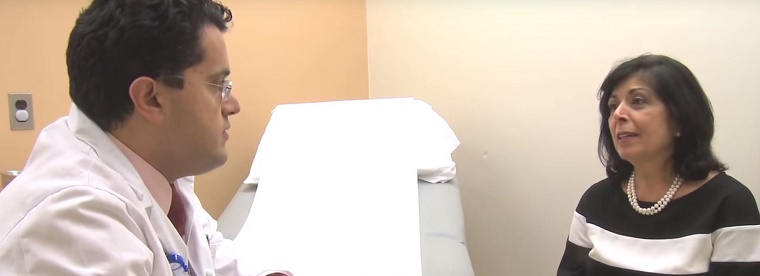Sarcomas are rare, only accounting for 1 percent of cancers diagnosed in adults. That means that many people don't learn about these cancerous tumors of the connective tissue unless they or a loved one have received a sarcoma diagnosis.
Although there are dozens of different types of sarcoma, they can be grouped into two main kinds: soft tissue sarcoma and bone sarcoma. Read on to learn more about the symptoms, treatment options and challenges associated with this rare form of cancer.
What to Know About Sarcoma
Sarcoma does not always present with symptoms in the early stages or when located inside the abdomen, and only about half are discovered before they involve surrounding parts of the body. The symptoms that patients do notice vary based on the location of the sarcoma, the type of sarcoma and the presenting stage. At that point, the treatment plan has to be personalized to each patient, taking into account any presence of additional chronic disease or condition.
The majority of sarcomas present in the extremities (arms and legs) or trunk, in which case you might see a lump that has been growing over time. The second most common type of sarcoma involves the retroperitoneum, an anatomical space located toward the back of the abdomen. With this type of sarcoma, the only symptoms experienced might be pain or possibly blood in a patient's vomit or stool.
The survival rate of sarcoma depends largely on many factors, but importantly the sarcoma type, size, grade, location, and - of course - stage. For example, stage one with favorable features can have a 90-percent, five-year survival rate, while stage three can drop below a 56-percent, five-year survival rate. It should also be noted that the survival rate is higher when the sarcoma is found in the extremities.
Sarcoma Treatment Options and Challenges
The right treatment for sarcoma depends on several factors, such as the stage of the cancer, as well as its location and type. But generally speaking, surgical intervention and radiation therapy are the most common courses of treatment. In addition, chemotherapy may be leveraged as a treatment strategy, either before or following surgery, as a means to shrink the tumor or prevent further spreading of the cancer.
Despite the generally positive outcomes for most sarcoma patients, the journey of treatment is not without challenges. Sarcoma tends to present slightly in extremities and can be located close to joints, blood vessels or critical nerves. This means a doctor needs to be able to remove the entire sarcoma without leaving the patient with a nonfunctioning extremity.
By contrast, it’s harder to detect it in the retroperitoneal or abdominal areas. Patients may be bloated or simply think they’ve gained weight, so they might put off going to the doctor. In some cases, the only time the doctor detects sarcoma in the abdomen is when the patient has a CT scan for a different reason.
Sarcoma Treatment and Recovery Is About the Patient
If you or a loved one is diagnosed with a sarcoma, it is important to seek out a specialty center with an expertise in sarcoma. This is especially true since there are over 50 types of sarcoma. In addition, you should engage specialists that have the experience necessary to not only identify the stage of cancer upfront, but also determine the right sequence of treatments.
Most of all, the right physician will understand the needs and desires of the patient come first, down to the sequence and length of treatments, and should make it clear that this is a journey that you are all on together.

